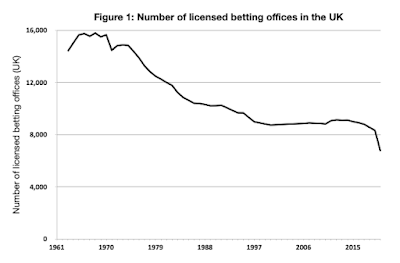Live With Littlewood was back last night, for the first time in a studio with an audience. One of the topics that came up was the Obesity Health Alliance's latest list of demands. This didn't get much attention from the media, which must have upset them, but it really shows what happens when you give fanatics an inch.
The Obesity Health Alliance claim that their long list of demands will 'turn the tide' of obesity. This is a tacit admission that all the policies they spent years campaigning for and which the government has introduced or will soon introduce - the sugar tax, the food advertising ban, reformulation, banning BOGOFs, keeping 'junk food' out of shop entrances and exits, etc. - will not reduce obesity. They are certainly not prepared to wait and find out.
The proposal made by the UK Government in 2019 to restrict shops from selling energy drinks to under-16s is a new potential policy lever to restrict children from purchasing unhealthy food.
Restrictions on advertising unhealthy products from categories that contribute to children’s excess sugar and calorie intake are due to be introduced in 2022 across the UK, subject to Parliamentary approval, with a 9pm watershed to be applied to all TV channels, regardless of audience size. These new restrictions should be implemented in full and extended to cover all other media where advertising can be time restricted, such as cinema and radio.
A comprehensive approach to outdoor advertising (both traditional posters and digital billboards plus advertising on transport) is needed to bring it in line with the broadcast and digital environment. This should be achieved with a total restriction on unhealthy food and drink advertising, meaning only healthier products are advertised.
Make a specific, time-bound commitment to introduce regulation to mandate calorie limits on single-serve portions of HFSS products if 25% of the calorie reduction targets have not been achieved by the first report point (2022) in the ongoing calorie reduction programme.
A mandatory upper limit on calories per single portion of unhealthy foods would limit excessively large portion sizes, particularly in the OOH sector.
Introduce new regulations to limit the use of promotional techniques on unhealthy food and drink product packaging.This should include the following:
• Restrictions on the use of cartoon, brand equity and licensed characters along with celebrities and sports stars.
• End the use of on-pack promotional offers including give-aways, and competition prizes.
• Restrictions on nutritional and health claims.
They want price controls...
Explore and develop effective policies that address disproportionate pricing structures on HFSS products, to prevent multi-portion servings being sold for proportionately less than individual servings.
Since plans to introduce a ban on multi-buy promotions and location-based promotions were first announced in 2018, some large retailers have switched promotion strategies to focus on price reduction, rather than multi-buys [who could have seen that coming?! - CJS]. Further research is needed to understand if price-reduction strategies lead to increased purchasing in the same way as multi-buys, with further regulation needed if this is the case.
Introduce a fiscal lever on food and drink manufacturers to incentivise further reformulation of processed food, such as the sugar and salt reformulation tax proposed in the National Food Strategy.
Assess the potential and utility of fiscal stimulus mechanisms to support food businesses to shift towards the production, manufacture, and sale of healthier food and drink products.
The barriers to businesses shifting their business models towards those that favour healthier foods need to be addressed through fiscal policies, incentives and investment, with taxes on unhealthy ingredients in processed food being a clear, evidence- informed way to have a positive impact on outcomes related to obesity.
A key fiscal tool that the Government has at its disposal is the use of taxes on unhealthy ingredients in processed food, with substantial evidence that taxation can have a positive impact on outcomes related to obesity.Building on the success of the SDIL, a direct levy payable by the food and drink industry is the most effective way to achieve reformulation and should be implemented by the UK Government as a priority.
And bans on food outlets opening...
...restricting granting or renewal of licences for establishments selling unhealthy food and use of exclusion zones to limit fast-food takeaways around schools, parks and leisure centres
They also seem to think that some shops should be banned from selling sweets, crisps, etc. altogether.
The growth of portion sizes needs to be addressed in conjunction with many other changes to the food environment, including the ready availability of unhealthy foods at non-food retail outlets (such as garages, clothes retailers and charity shops).
There is a need to extend advertising restrictions to the brands that are associated with predominantly unhealthy products, as well as to the individual unhealthy products themselves: under the forthcoming restrictions, brand advertising will be permitted so long as it does not include identifiable unhealthy products. This will require the development of a new methodology to determine whether brands are associated with HFSS products based on their product portfolios and sales
Naturally, this will require yet more bureaucracy paid for with all that sweet, sweet taxpayers' money.
The issues with the current self-regulatory system are not unique to unhealthy and food and drink advertising and addressing this is part of the UK Government’s wider online harms agenda. More broadly, there is a need to establish a new independent regulatory approach that includes the pre-approval of advertising of all types, monitor compliance and sanction non-compliance with fines.
These people want nothing short of state control of the food supply. They are quite mad, but the government capitulated to them last time so who is to say it won't capitulate again?



